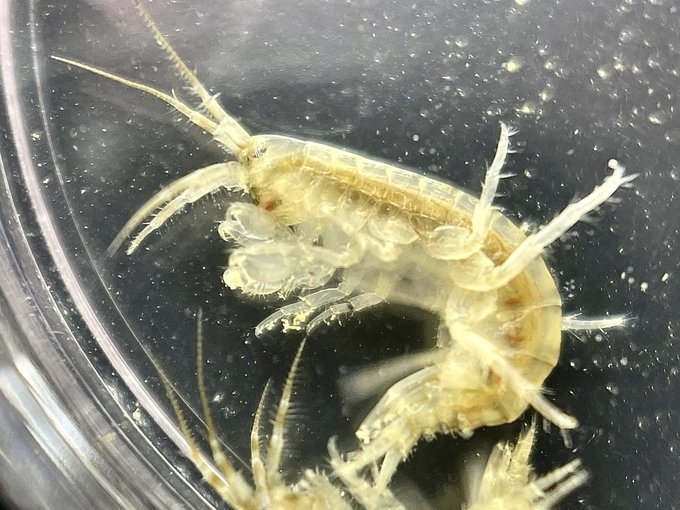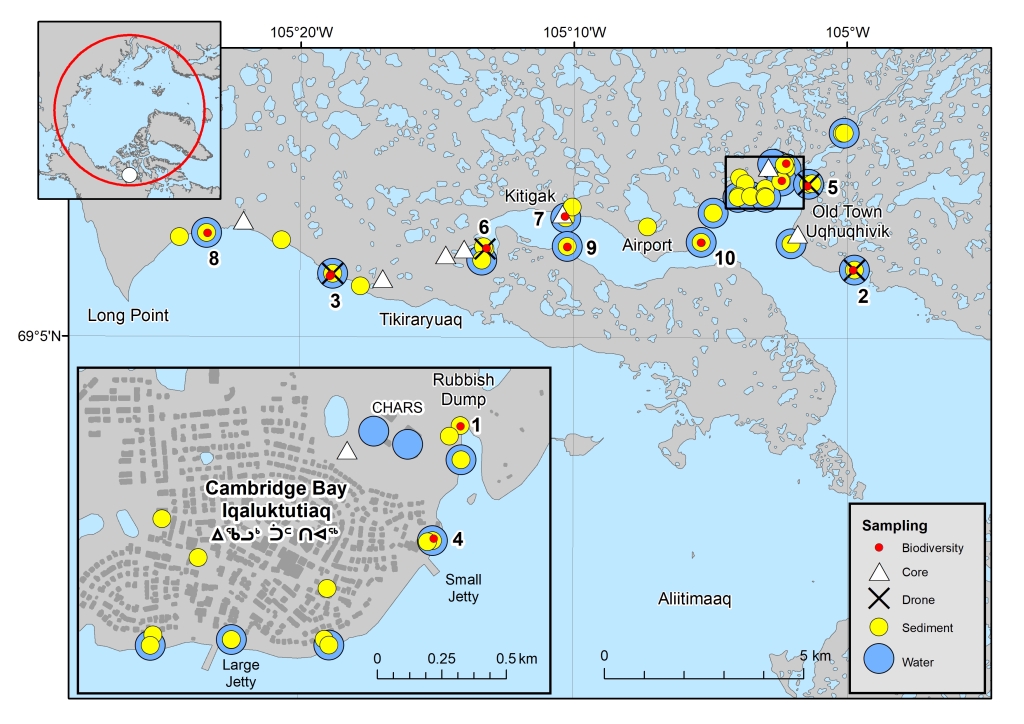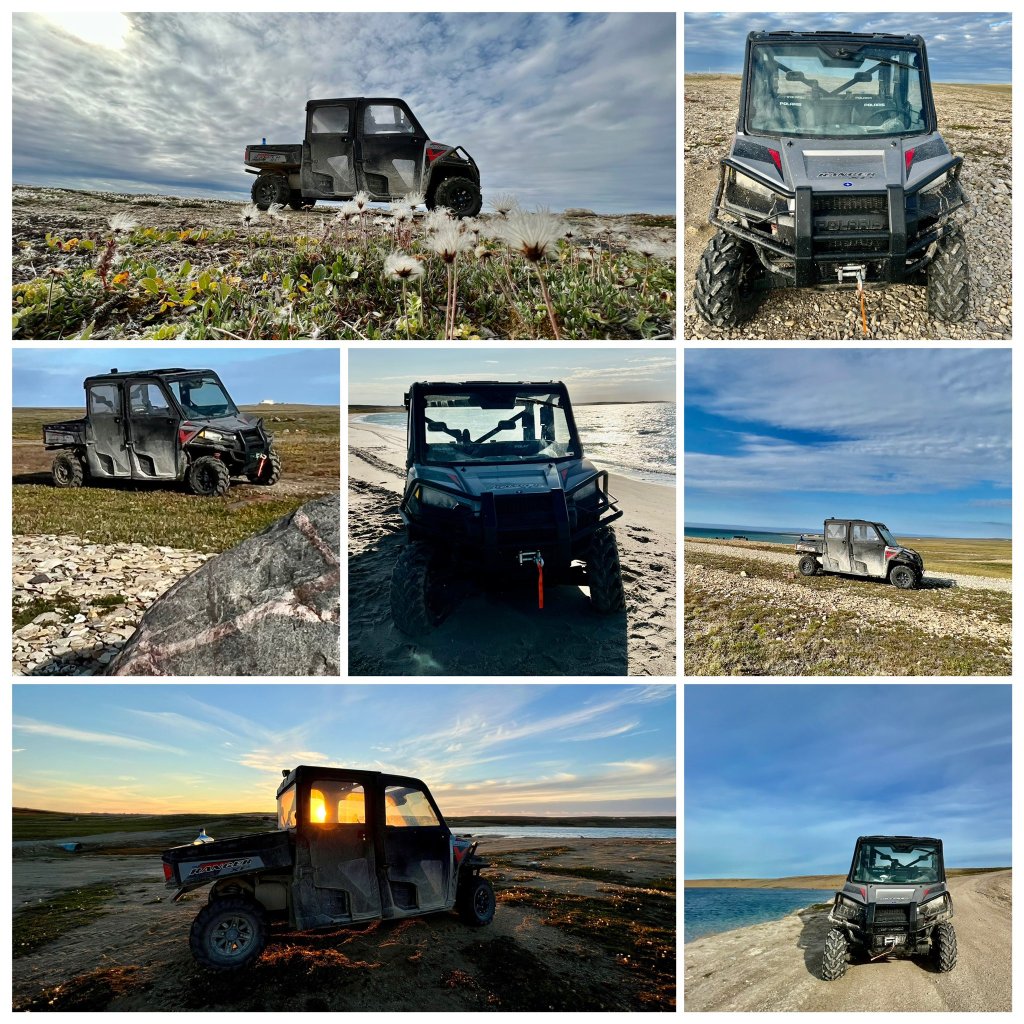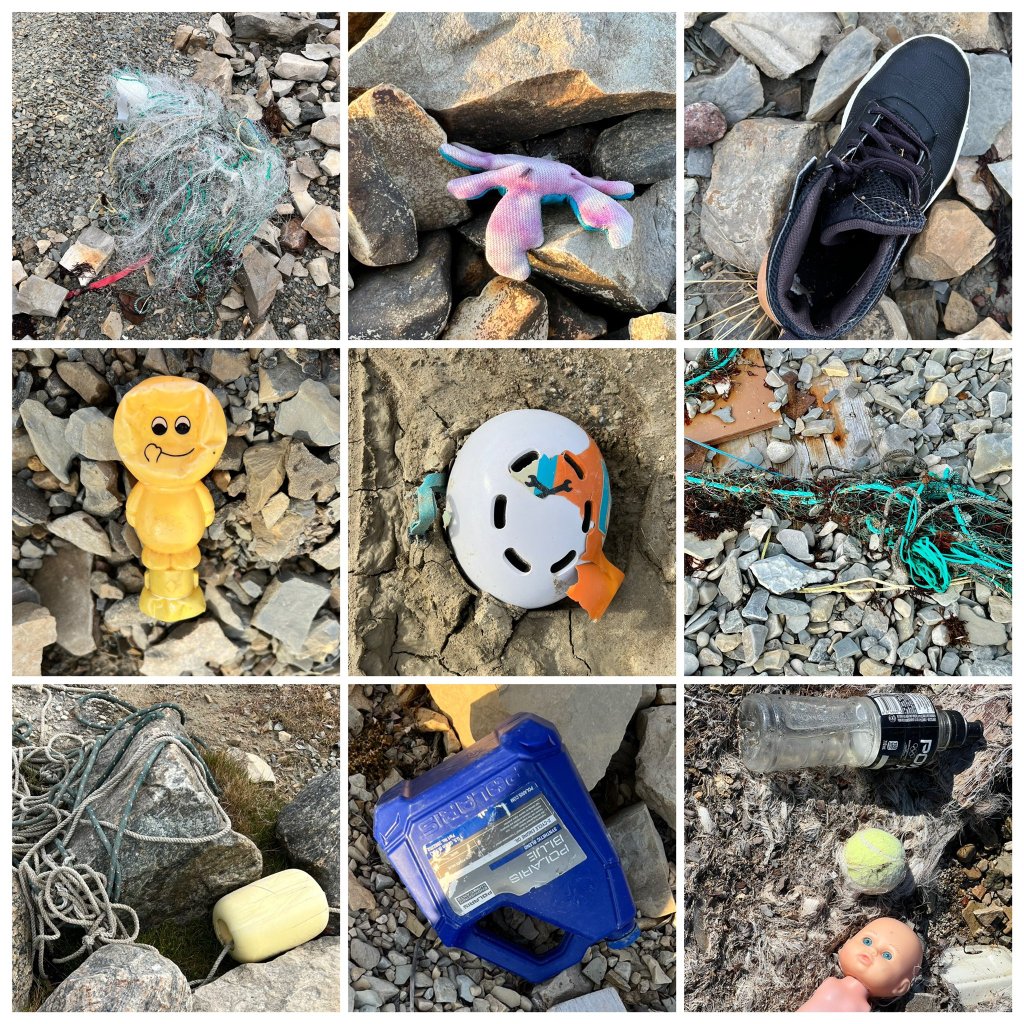Blog: Hunting for microplastics in the high Arctic
23 August, 2022
Huw Griffiths works in the Biodiversity Team at British Antarctic Survey. As he completes fieldwork in the Canadian Arctic with colleagues Cath Waller (University of Hull) and Steve Roberts (BAS), this blog describes why they are hunting for plastic on the beaches and how they hope results from the team’s work will help to change attitudes and policy in the region
The “Biodiversity and Plastics in Arctic Intertidal and Nearshore Terrestrial Systems” (B-PAINTS) team have completed our first week in Nunavut working at the Canadian High Arctic Research Station (CHARS) in Cambridge Bay/Iqaluktuuttiaq/ᐃᖃᓗᒃᑑᑦᑎᐊᖅ. Time has flown by, and the weather has gone from hot and sunny to colder with 100 km/h winds.

We are working on the beaches around the bay studying the biodiversity and looking for pollutants such as microplastics. The waters of Cambridge Bay are frozen for most of the year, making the beaches an inhospitable place for most types of life. Unlike most rocky shores around the world, Cambridge Bay has no intertidal seaweeds and very few species of animals known from the beach. The last published survey from 1961 recorded only a single species of animal from the beaches of Cambridge Bay, the amphipod crustacean Gammarus setosus. So far, we have found this species in large numbers and one example of another species of amphipod and some mussels. This very low biodiversity is probably a result of the continual scouring of the beach by ice for most of the year, but the deeper waters of the bay are known to support a rich diversity of seafloor life.

As well as studying the biodiversity, we are looking for microplastic pollution in the air, dust, beach sediments, animals and water. Unfortunately, microplastics are known from all regions of the Earth and Cambridge Bay is no exception. Our preliminary results have found what appear to be plastic fibres and particles everywhere we have looked. We hope to use our samples to build up a picture of the pollution hot spots around the bay.

We are using our multi-spectral drone to survey the beaches from above for biodiversity and larger pieces of plastic. The drone can cover a far larger area than humans during the limited time that the tide is at its lowest point. The drone images highlight the lack of any large plant life in the shallowest waters of the bay compared to the bright red hot spots of the plants on land and seaweeds underwater further offshore.

Time flies when you are having fun, and our two weeks the Canadian High Arctic Research Station (CHARS) in Cambridge Bay/Iqaluktuuttiaq/ᐃᖃᓗᒃᑑᑦᑎᐊᖅ have flow by. It has been a busy couple of weeks with 110 sampling events collecting drone images, dust and beach sediments, sea and tap water sampling, and biodiversity observations and collections (see the map below for where we went).

The Arctic weather gods have been (mostly) smiling down on us, and our daily commute has been fun if a bit dusty in our mini truck/ side-by-side.

Our working locations have been beautiful especially the evening fieldwork which has provided us with some stunning sunsets. The local people have been really friendly, and the children very enthusiastic, even helping us spot jellyfish and comb jellies from the dock when plankton sampling between low tides. A real highlight for the team was presenting a talk about Antarctica to a group of children from the Actua summer camp being hosted at CHARS, followed by a long chat about the animals that live around the South Pole and who eats who in the Southern Ocean.
We came here looking for microplastics, but one thing that is obvious on the beaches are the macroplastics (bigger pieces of plastic litter). Every beach we looked at had as much, or more, plastic litter than you would find in heavily populated areas of the world. These larger plastics will, if not removed, eventually breakdown into microplastics and chemical pollutants that can enter environment and food chain. We are hoping that our results will help to change attitudes and policy in the region, and to encourage recycling and safe disposal of these long-term pollutants.

In the short time we have been here we have been fortunate enough to meet and be welcomed by many local people and talk with them about their Arctic home and their perceptions of pollution and climate change. We were treated to a traditional fire lighting ceremony from a local elder and throat singing from Kalinda and Victoria during a visit from the Canadian Minister for Northern Affairs, the Honourable Dan Vandal. The fabulous Helen and Pam at the Pitquhirnikkut Ilihautiniq / Kitikmeot Heritage Society told us about their experiences of changes in wildlife distribution and the new arrivals such as the moths that weren’t this far north a few years ago.

We were also treated to some delicious local sweetened bread and tales of changes to the abundance and timings of the local Arctic char (the iconic fish species that gives the bay its Inuit name: Iqaluktutiaq, meaning “good fishing place”) by an Inuit woman and her son who were at their fishing cabin on the south coast of the island. One thing that did surprise us was how few of the people we met knew that anything lived on their beaches. When we showed people the small wriggling amphipods that we collected (the only species that we regularly found on the beaches) there were a mixture of reactions from delight to disgust! The beaches here are very narrow and the tide only has a range of around two metres, so this is a poor source of food, and being covered in ice and snow for most of the year explains why the beaches can be an underappreciated part of the Arctic landscape.
As climate change tightens its grip on the Arctic, these humble and overlooked beaches, ravaged by ice and seemingly lifeless, might turn out to be the perfect early warning system to track the changes inevitably coming to the area. The very short list of species capable of surviving here presently means that any changes to the biodiversity from milder conditions or a reduction in sea ice would be very easy to spot. Our work has compiled a comprehensive species list (5 species) dominated by the amphipod Gammarus setosus, an easy to spot and recognise species, and no seaweeds. Anything else that local people or scientists visiting CHARS find living on the beach could be a sign of changes to come.